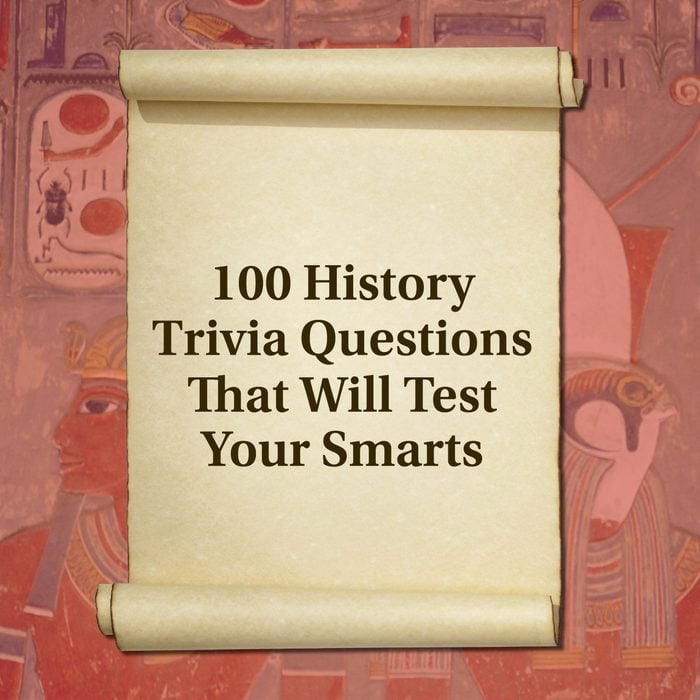
How many of these history trivia questions can you get right?
There seems to be trivia for everyone and every topic; there’s movie trivia, pop culture trivia, Netflix trivia and even trivia questions for kids. If you’re more of a history buff, don’t worry—there’s plenty of history trivia to test your IQ with.
History trivia is equally challenging and interesting. Yes, you have to remember who did what and when they did it, but you also reflect on those events and how they shaped the world as we know it. That being said, it’s time to sit back, put your thinking cap on, and see how many of these history trivia questions you can ace from four different categories. Fair warning: some questions may leave even the biggest history buffs stumped (even if they’ve watched history documentaries to prepare!)
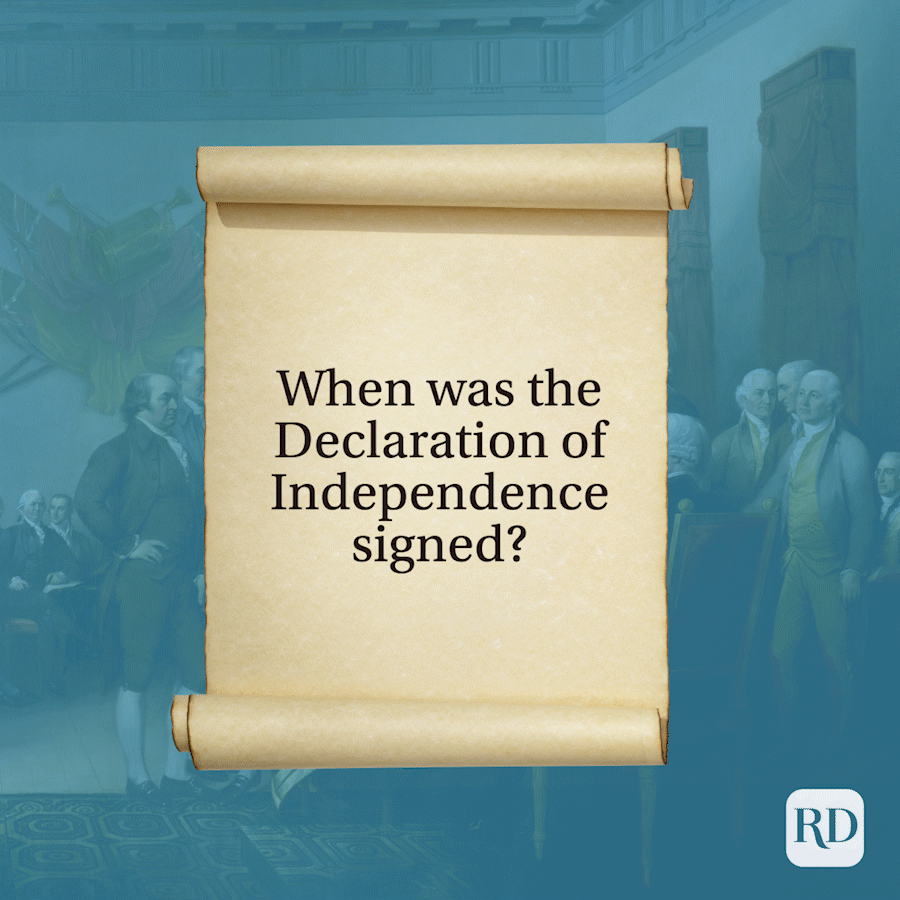
U.S. history trivia
Question: When was the Declaration of Independence signed?
Answer: August 2, 1776
Don’t forget to read up on the difference between the Declaration of Independence and the U.S. Constitution.
Question: The United States bought Alaska from which country?
Answer: Russia
Question: Who was the fourth president of the United States?
Answer: James Madison
Question: Which era marked a switch from agricultural practices to industrial practices?
Answer: The Industrial Revolution
Question: What was the name of the series of programs and projects President Franklin D. Roosevelt enacted during The Great Depression?
Answer: The New Deal
Question: Fill in the blank: The 19th Amendment guarantees ____ the right to vote
Answer: Women
Question: Which four presidents are on Mount Rushmore?
Answer: George Washington, Abraham Lincoln, Thomas Jefferson, and Theodore Roosevelt
Question: Who was the first woman to make a million dollars in the United States?
Answer: Madam C.J. Walker
Question: Which year was George H.W. Bush elected president?
Answer: 1988
Question: What do the stripes on the American flag represent?
Answer: The 13 original colonies
Question: Where was Martin Luther King, Jr. born?
Answer: Atlanta, Georgia
Question: Which two Native American leaders led Lakota Sioux and Cheyenne warriors in the fight against Lieutenant Colonel George Custer’s troops in the Battle of Little Bighorn?
Answer: Crazy Horse and Sitting Bull
Question: Finish the line President Franklin D. Roosevelt said during his speech addressing the attack on Pearl Harbor: “Yesterday, December 7, 1941…”
Answer: “A date which will live in infamy”
Question: What was the name of the landmark Supreme Court case that ruled the racial segregation of schools unconstitutional?
Answer: Brown v. Board of Education
Question: What year was the Vietnam Veterans Memorial dedicated in Washington, D.C.?
Answer: 1982
Question: The “shot heard ’round the world” describes the beginning of which battles in the American Revolution?
Answer: The Battles of Lexington and Concord
Question: What was the first state to legalize same-sex marriage?
Answer: Massachusetts
Question: Who was president during the Cuban Missile Crisis?
Answer: John F. Kennedy
Question: Who was the first Black Supreme Court justice in the United States?
Answer: Thurgood Marshall
Question: In what year did child labor laws start in the United States?
Answer: 1938
Question: What was the name of the battle in the Pacific fought between the U.S. Navy and the Imperial Japanese Navy in June 1942?
Answer: Battle of Midway
Question: When was the Battle of Gettysburg fought during the Civil War?
Answer: July 1 through July 3, 1863
Question: Who was the first American to win a Noble Peace Prize?
Answer: Theodore Roosevelt
Question: What country did the U.S. men’s Olympic hockey team defeat in the semi-finals of the 1980 Winter Olympics in Lake Placid, a game commonly known as the “Miracle on Ice”?
Answer: The Soviet Union
Question: What year did the North American Free Trade Agreement (NAFTA) go into effect?
Answer: 1994
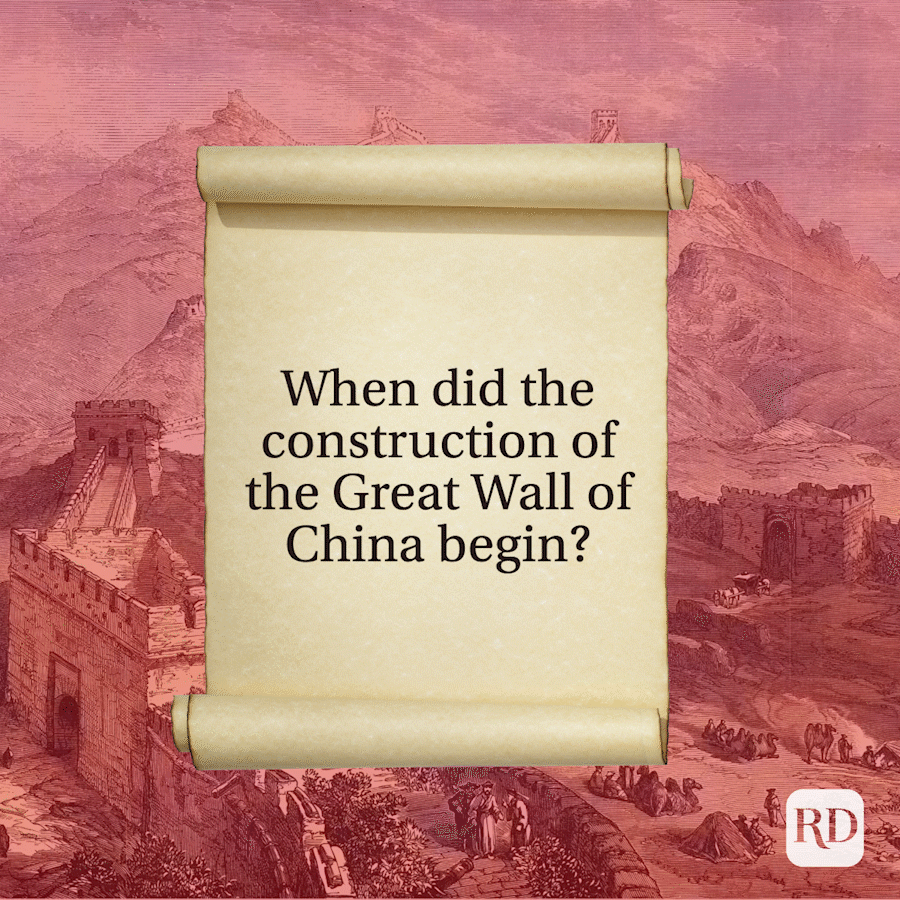
World history trivia
Question: When did the construction of the Great Wall of China begin?
Answer: 7th century BC
Question: Who sent Christopher Columbus to explore the New World?
Answer: King Ferdinand of Spain
Question: What is considered the largest empire in history?
Answer: The Mongol Empire
Question: What year did the French Revolution start?
Answer: 1789
Question: What event is commonly believed to have sparked World War I?
Answer: The assassination of Archduke Franz Ferdinand of Austria
Question: Who was the last Tsar of Russia?
Answer: Nicholas II
Question: How many Celtic languages are still spoken today?
Answer: Six
Question: In what year did Libya gain independence from Italy?
Answer: 1951
Question: Where did Albert Einstein live before moving to the United States?
Answer: Germany
Question: Who is commonly referred to as the person who created the first printing press?
Answer: Johannes Gutenberg
Question: During which war was a Christmas Truce called?
Answer: World War I
Question: How old was Queen Elizabeth II when she was crowned the Queen of England?
Answer: 27
Question: What was the code name for the German invasion of the Soviet Union during World War II?
Answer: Operation Barbarossa
Question: When did the Mexican Revolution start?
Answer: November 20, 1910
Question: Who was the first ruler of the Mongol Empire?
Answer: Genghis Khan
Question: What year did India gain independence from Britain?
Answer: 1947
Question: Who was the first person in the world to land on the moon and which country were they from?
Answer: Neil Armstrong from the United States
Question: In what year is the Bubonic Plague believed to have started in Europe and Asia?
Answer: 1346
Question: What was the capital city of the Inca Empire?
Answer: Cusco
Question: What was the name of the Ukrainian nuclear power plant that was the site of a nuclear disaster in April 1986?
Answer: Chernobyl
Question: What was the name of the international group formed to maintain world peace after World War I?
Answer: The League of Nations
Question: How long did the Han Dynasty rule China?
Answer: More than 400 years
Question: During World War II, Allied troops stormed the beaches of Normandy. Which country is Normandy in?
Answer: France
Question: In which country was the Battle of Culloden fought in 1746?
Answer: Scotland
Question: Who fought in the Hundred Years’ War?
Answer: Britain and France
Don’t forget to read about these bizarre historical coincidences—they’ll blow your mind.
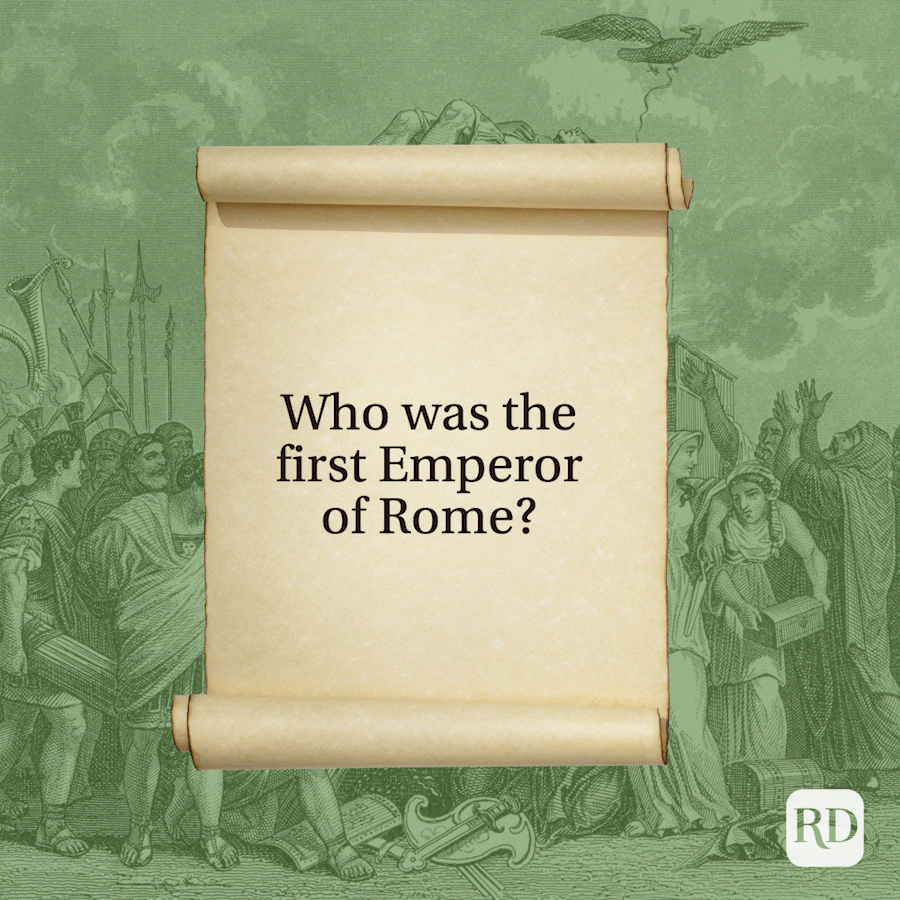
Ancient history trivia
Question: Who was the first Emperor of Rome?
Answer: Augustus
Question: Mount Vesuvius erupted in 79 AD and devastated which two Roman cities?
Answer: Pompeii and Herculaneum
Question: Modern-day Istanbul, Turkey, used to be called what when it was the capital of the Byzantine Empire?
Answer: Constantinople
Question: What is the world’s oldest recorded civilization?
Answer: Mesopotamia
Question: Which two city-states fought in the Peloponnesian War?
Answer: Athens and Sparta
Question: Which Greek goddess was the Parthenon dedicated to?
Answer: Athena
Question: The Great Pyramid was built as a tomb for which pharaoh?
Answer: Khufu
Question: Who established the Xia Dynasty in China?
Answer: Yu the Great
Question: How many rules are written in the Code of Hammurabi?
Answer: 282
Question: What dynasty was Cleopatra part of?
Answer: The Ptolemaic dynasty
Question: What are the seven wonders of the ancient world?
Answer: The Great Pyramid of Giza in Egypt, the Hanging Gardens of Babylon, the Statue of Zeus at Olympia, the Temple of Artemis at Ephesus, the Mausoleum at Halicarnassus, the Colossus of Rhodes, and the Lighthouse of Alexandria
Question: Who is the king of the Olympian gods in Greek mythology?
Answer: Zeus
Question: When was Julius Caesar assassinated?
Answer: Ides of March (March 15, 44 BC)
Question: The Maya Empire was centered in what is now which country?
Answer: Guatemala
Question: Which ancient figure is often considered the founder of Western philosophy?
Answer: Socrates
Question: When did Alexander the Great conquer Egypt?
Answer: 332 BC
Question: What was the name of the ancient trade route that connected the East with the West?
Answer: The Silk Road
Question: How old was King Tutankhamun when he died?
Answer: 19
Question: Where is the Pyramid of the Sun located?
Answer: Teotihuacán, Mexico
Question: Which famous battle is widely considered a turning point in the wars between Persia and Greece?
Answer: The Battle of Marathon in 490 BC
Question: Queen Nefertiti ruled alongside which pharaoh?
Answer: Pharaoh Akhenaten
Question: The Colosseum started to be built under while which Roman emperor was in power?
Answer: Vespasian
Question: Which fabric was invented in Ancient China?
Answer: Silk
Question: The Byzantine Empire was a continuation of which powerful ancient empire?
Answer: The Roman Empire
Question: Athenian leader Cleisthenes introduced the concept of demokratia in 507 BC. What does demokratia translate to?
Answer: Democracy
Bookmark this list of random trivia to read later (you never know when you’ll need it).
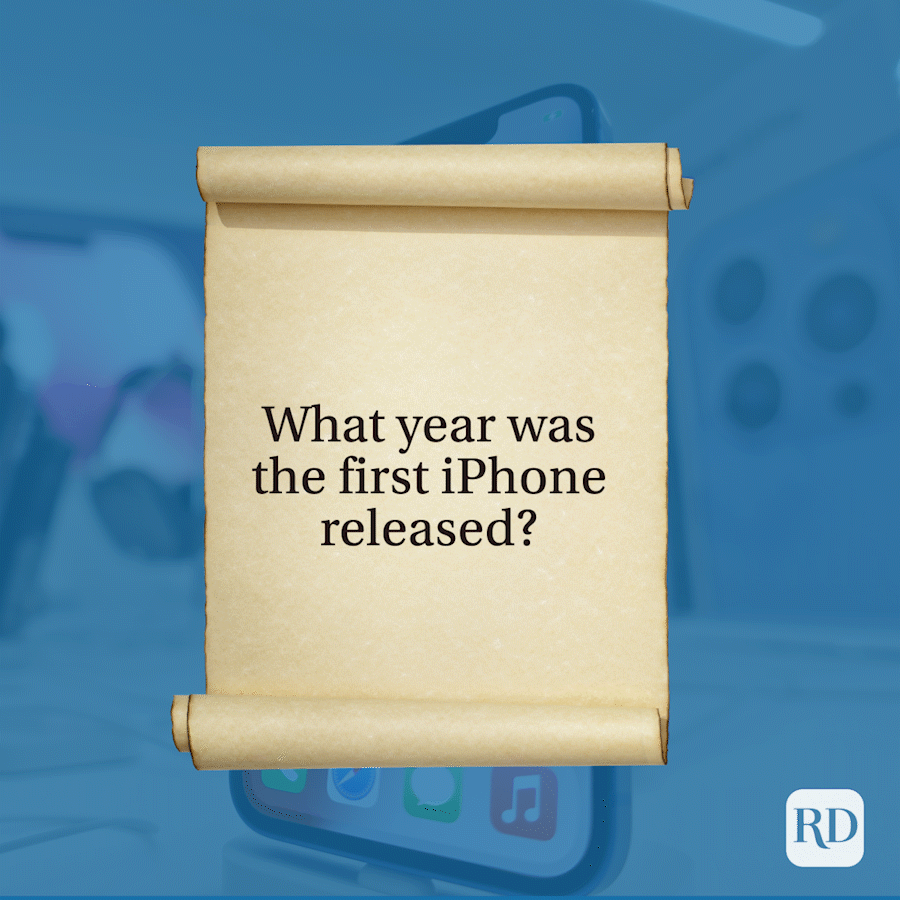
Modern history trivia
Question: What year was the first iPhone released?
Answer: 2007
Question: What was the acronym commonly used for the 2000 software problem that many thought would cause computers to become inoperable?
Answer: Y2K
Question: Which country hosted the 2016 Olympics?
Answer: Brazil
Question: The U.S. rover Curiosity landed on which planet in August 2012?
Answer: Mars
Question: Who became the youngest person to win a Nobel Peace Prize at age 17 in 2014?
Answer: Malala Yousafzai
Question: What year did the Berlin Wall fall?
Answer: 1989
Question: What was the name of the Category 5 hurricane that hit New Orleans and its surrounding areas in 2005?
Answer: Hurricane Katrina
Question: Which two royal family members were divorced in 1996?
Answer: Prince Charles and Princess Diana
Question: What year was Facebook created?
Answer: 2004
Question: The U.S. hosted the FIFA World Cup in 1994. Which country won the game?
Answer: Brazil
Question: Which planet was downgraded to a dwarf planet in 2006?
Answer: Pluto
Question: What year did Google launch?
Answer: 1998
Question: Who won the 2008 U.S. Presidential election?
Answer: Barack Obama
Question: Which two countries signed the Good Friday Agreement in 1997?
Answer: Britain and Ireland
Question: In 1996, a sheep became the first mammal cloned from an adult somatic cell. What was the name of that sheep?
Answer: Dolly
Question: Brexit refers to which country leaving the European Union?
Answer: The United Kingdom
Question: Who became the most decorated gymnast in history during the 2010s?
Answer: Simone Biles
Question: What year did the Internet become available to the public?
Answer: 1993
Question: What was the global recession that lasted from 2007 to 2009 called?
Answer: The Great Recession
Question: Which U.S. city hosted the Summer Olympics in 1996?
Answer: Atlanta
Question: What is the name of the whistleblower who leaked classified information from the National Security Agency (NSA) in 2013?
Answer: Edward Snowden
Question: What year was the Paris Agreement signed?
Answer: 2015
Question: What U.S. government department was created in the wake of the September 11 attacks?
Answer: The Department of Homeland Security
Question: What year was Nelson Mandela freed from prison?
Answer: 1990
Question: Who was the first woman to be elected Vice President of the United States in 2020?
Answer: Kamala Harris
Next, read up on trivia about the United States you may not have learned in school.
More From Facts & Trivia: